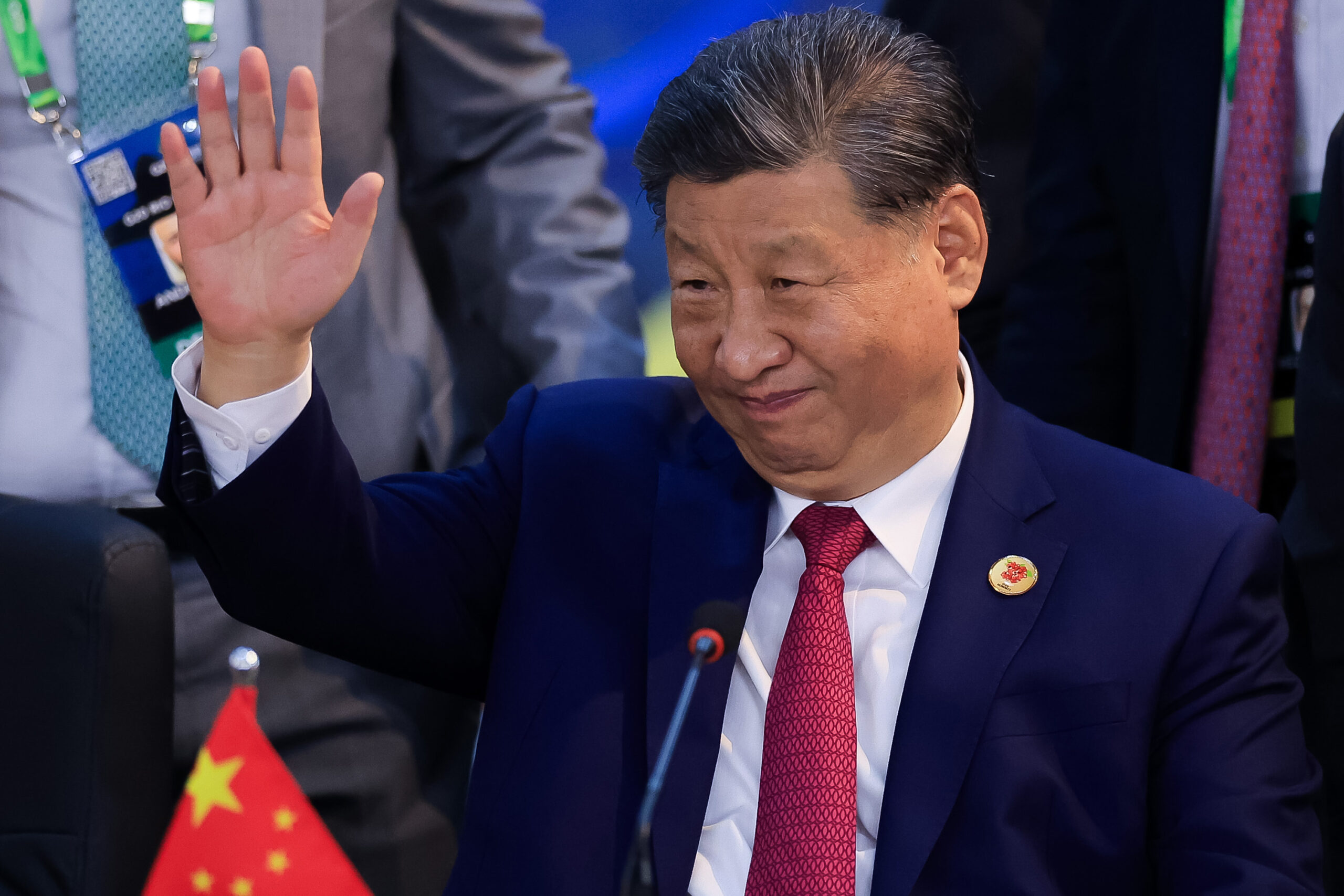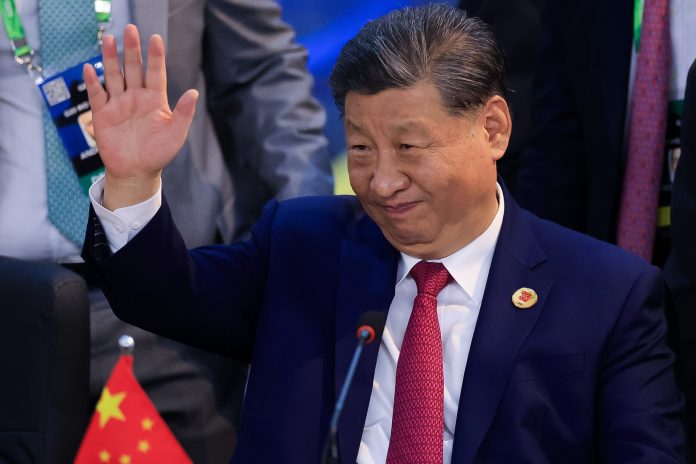
It has been a very busy week for Xi Jinping. The president of China spent the last several days on a whirlwind diplomatic tour of South America, showing off Chinese muscle—or, more accurately, Chinese money—in the traditional preserve of the United States. China has been actively building up its commercial and political power in the region for years, and the results are beginning to bear fruit. China has shown that it can use its readily available credit and massive market for South American imports to sway even the most dedicated of American allies.
The tour began with the ceremonial opening of the Peruvian megaport of Chancay, the crown jewel of Chinese investment in South America and the centerpiece of a wide-ranging network of Chinese infrastructure and materials extraction projects in the region. The megaport falls under the aegis of China’s Belt and Road initiative, and serves to expand Chinese trade and transportation infrastructure as a geopolitical strategy by tying Latin American countries ever more closely with Chinese interests while making available the plentiful natural resources of the continent for use by Chinese industry.
The port is owned by the Chinese shipping conglomerate Cosco, which has invested $1.3 billion in the project over the past five years and is expected to invest billions more in the years to come. With 15 quays and a deep-water harbor capable of accommodating the largest container ships currently in operation, the port will dramatically reduce the time needed to transport goods to and from Asia, being capable of handling over a million containers a year in its first stage of operation. China is simultaneously investing in a major railway expansion across the Amazon, which it hopes will facilitate its access to the important Brazilian market.
In his inaugural speech at Chancay, Xi said, “We are witnessing not just new development under the Belt and Road Initiative in Peru, but also the birth of a new land-sea passage for a new era.”
The port is just one of many Chinese projects in South America—the country is also heavily invested in the continent’s mining, transportation, oil extraction, power generation, and other vital industries. Its deliberate cultivation of and cooperation with regional governments is a sharp contrast to the approach of the hemisphere’s largest power, the United States, which has traditionally dominated Latin America. Since the end of the Cold War, the U.S. has paid relatively little attention to the region; the Chinese government has been eager to take advantage of this lapse.
Immediately after his visit to Chancay, Xi attended the Asia-Pacific Economic Cooperation summit, where he gave a speech emphasizing China’s interest in integrating further with the region by implicitly contrasting it with the U.S. turn towards a more protectionist economic policy:
Unbridled unilateralism and protectionism and the increasing fragmentation of the world economy threaten to reverse the trend toward economic globalization… Economic globalization, being an objective requirement for the development of the productive forces of society and a natural result of scientific and technological progress, represents a majestic historical current… We must reject the outdated path of a few countries pursuing dominance and hegemony. We must push for more positive impacts of economic globalization and enter a new stage of greater vitality, inclusiveness and sustainability.
The diplomatic tour was capped with Xi’s attendance at the G20 summit in Rio de Janeiro, where the Chinese president emphasized the country’s commitment to the “Global South” and argued that the international community should promote multipolarity and oppose economic protectionism, two of the key pillars of Chinese foreign policy. The country considers itself a major world power, in competition with the United States, and its position as the world’s largest exporter provides it with both a financial incentive to oppose trade barriers and a tool for extracting concessions from potential partners.
Xi took the opportunity to put the power of the Chinese market on full display in Rio by holding a bilateral meeting with Argentina’s President Javier Milei on Tuesday, the final day of the G20 summit. Milei, who is one of America’s strongest allies in the region, was a fierce critic of China during his campaign for the presidency in 2023, stating flatly, “Not only will I not make deals with China, I will make deals with no communist at all. I am a defender of liberty, peace, and democracy. The communists will not come here. The Chinese will not come here.”
Subscribe Today
Get daily emails in your inbox
Now dealing with the nigh-impossible task of setting Argentina on a sound economic footing, however, Milei has changed his tune and sought closer relations with the Chinese government. “They are very interesting business partners,” Milei said. “They ask nothing of us, except that we leave them alone.” Not only is China one of the largest export markets for the vital Argentine agricultural sector, but China also—despite Milei’s previous hostilities—made a deal with the Argentine government five months into his term that allowed for the payment of a major portion of the national debt in yuans instead of dollars, a life-saving intervention for a central bank dangerously low on dollar reserves.
Now Milei, fresh from being hosted at Mar-a-Lago and taking smiling photos with Donald Trump, is happy to sit across the table and make friendly conversation with Xi. “The current commercial and financial agreements and ties were reaffirmed at the meeting, as well as the desire to continue exploring new opportunities to broaden and improve everything concerning the bilateral relationship,” the president said in a statement. Xi even won an invitation from the libertarian to visit Argentina personally in the future.
With the G20 summit over, Xi has since returned to China, but not without having made a major statement about his country’s influence in the Western Hemisphere. The U.S. has considered Latin America to be its exclusive sphere of influence for over 200 years, since the articulation of the Monroe Doctrine in 1823, but this week has demonstrated that that claim may be on its way to obsolescence.


